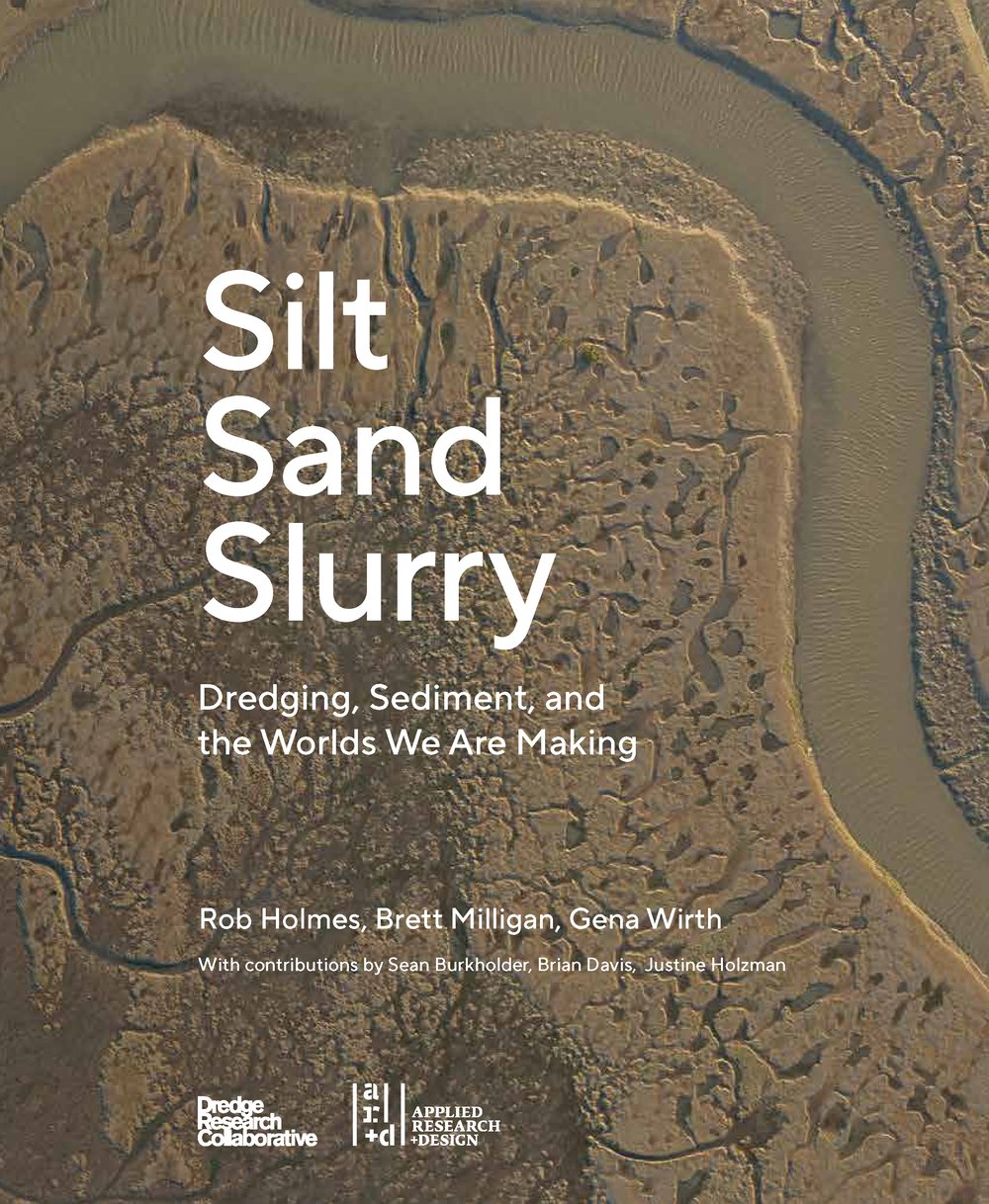Silt Sand Slurry
Dredging, Sediment, and the Worlds We Are Making

Sediment is an unseen infrastructure that shapes and enables modern life.
Silt is scooped from sea floors to deepen underwater highways for container ships. It is diverted from river basins to control flooding. It is collected, sorted, managed, and moved to reshape deltas, marshes, and beaches. Anthropogenic action now moves more sediment annually than ‘natural’ geologic processes — yet this global reshaping of the earth’s surface is rarely-discussed and poorly-understood.
In four thematic text chapters, four geographic visual studies, and a concluding essay, we demonstrate why sediment matters now more than ever, given our contemporary context of sea level rise, environmental change, and spatial inequality. We do this through a documentation of the geography of dredging and sediment on the four coasts of the continental United States. The book explores the many limitations of current sediment management practices, such as short-sighted efforts to keep dynamic ecosystems from changing, failure to value sediment as a resource, and inequitable decision-making processes. In response to these conditions, we delineate an approach to designing with sediment that is adaptive, healthy, and equitable.

Rob Holmes is an associate professor of landscape architecture at Auburn University.
Brett Milligan is an associate professor of landscape architecture at the University of California, Davis.
Gena Wirth is design principal at SCAPE Landscape Architecture.
The authors are members of the Dredge Research Collaborative, an independent 501c3 nonprofit organisation which aims to improve sediment management through design research, building public knowledge, and facilitating transdisciplinary conversation. Their work with the DRC has received numerous awards, including two national awards from the American Society of Landscape Architects, and includes design projects on all four coasts of the continental United States.
